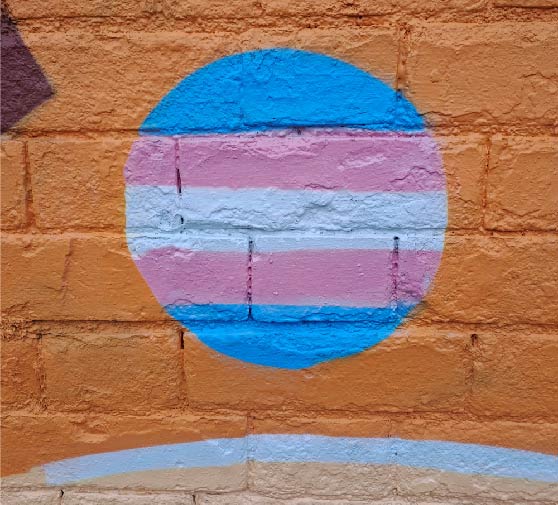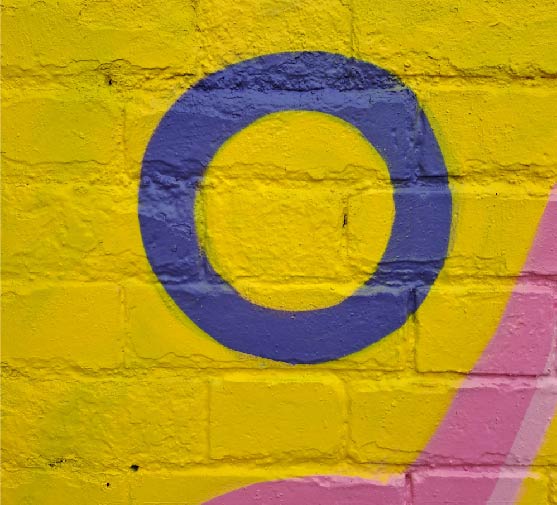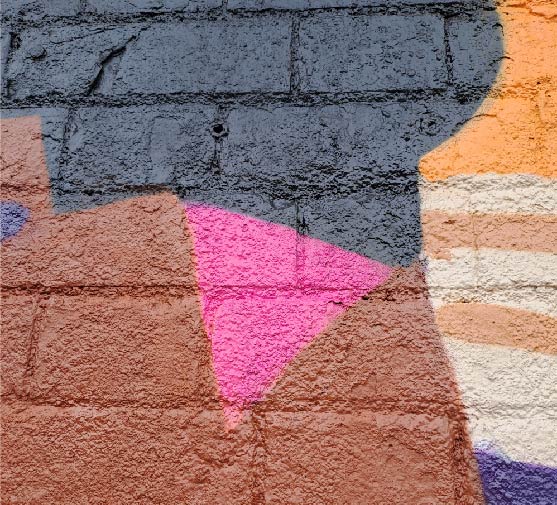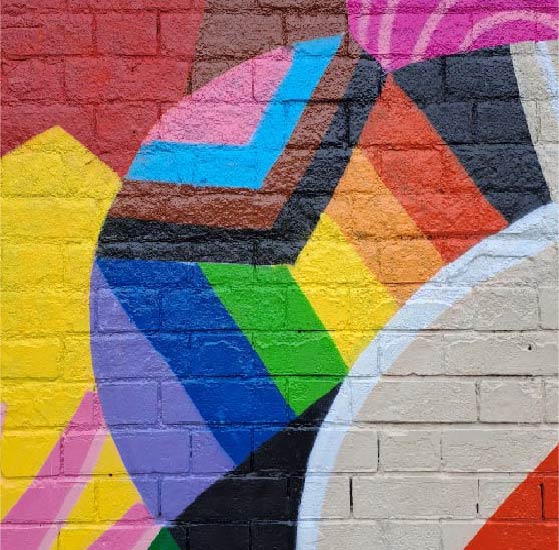Pride mural: A celebration of people coming together in love and friendship
As part of Irish Rail’s Pride campaign for 2023, we have engaged artist Claire Prouvoust to create a mural along the platform at Tara Street Station.
This mural represents the amazing diversity of Ireland’s LGBTQIA+ community and, importantly, includes many symbols and references to often underrepresented groups within that community that we had hoped to draw attention to.
In the spirit of welcoming everybody on board regardless of their identity, background or experiences, bringing as much representation to this piece as possible was key to
Key to this piece is the idea of representation; we want to bring attention to people and causes who may be overlooked through the medium of art, and revitalise a key space in Dublin’s city centre.
Below are some of the symbols you’ll see included.
The Bisexual Flag
The bisexual flag was designed in 1998; the pink, blue and purple are divided into fifths, and the purple blends seamlessly into the pink and blue to represent “where bi people blend unnoticeably into the gay/lesbian and straightcommunities.”
We highlight this flag to increase the visibility of bisexual people within the community, as they are often overlooked when it comes to LGBTQ+ events and Pride.

The Trans Flag
This flag is the most widely used flag to represent the trans community, designed in 1999 by Monica Helms. The pink and blue represented trans women and men, while the white represents those who identify with neither gender.
We highlight this symbol to show support and solidarity with Ireland’s trans community, and this rich and vibrant community.

The Nonbinary Flag
The non-binary flag represents many people who identify as havingno gender, having a fluid gender identity, as identifying with more than one gender, or sometimes as a separate, third gender. Many of these communities also have additional, separate flags. Sometimes non-binary people choose to medically transition, and sometimes they do not.

U=U
U=U is a phrase that means undetectable = untransmittable in reference to HIV and AIDS.
When someone is living with HIV and is on effective treatment, it lowers the level of the HIV – their “viral load” – in their blood. When the levels are extremely low, they are virally suppressed, and they cannot pass HIV on to another person sexually. We highlight this flag to bring attention to this important message, and reduce the stigma around HIV in Ireland.

The Intersex Flag
Intersex people are people with a mix of sex characteristics. These can be expressed in chromosome patterns, across physical characteristics, gonads, hormones and more.
Created in 2013, the intersex flag uses yellow and purple as colours free of gender associations. We highlight this community as intersex people experience discrimination and stigamisation from birth, or often from puberty onwards.

The Pink Triangle
Initially used as a symbol in Nazi Germany to identify homosexuals, it was revived as a symbol of protest against homophobia in the 1970. Nowadays, it’s used as a symbol of pride, and of liberation.
It has also been used as a symbol for ACT UP, an activist group, to draw attention to how HIV and AIDS disproportionately impacted men who have sex with men. We highlight this symbol to raise awareness of it’s use, and it’s importance to the LGBTQ+ community.

The Rainbow Flag
The rainbow flag, or pride flag, is one of the most widely recognised symbols of the LGBTQ+ community. Each colour represents something different:
Red: Life
Orange: Healing
Yellow: Sunlight
Green: Nature
Blue: Serenity
Purple: Spirit
Recently, new colours have been introduced including black and brown for POC, and baby pink, baby blue and white for the trans community.



